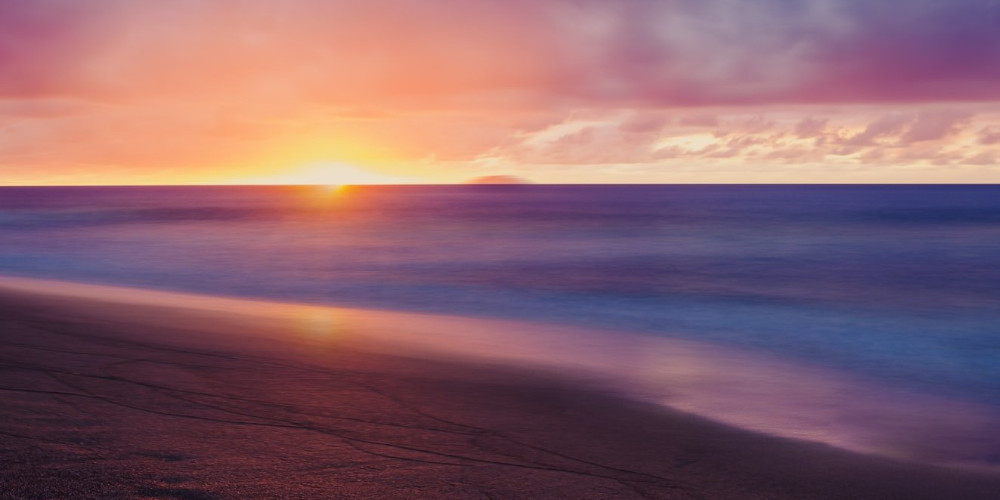TABLE OF CONTENTS
- 1. Puerto Rico on the world map
- 2. Interesting facts and history
- 3. Where is Puerto Rico and how to get there?
- 4. Transport
- 5. Tours and important information
- 6. Puerto Rico visa
- 6. What is the best time to travel to Puerto Rico?
- 7. Beaches of Puerto Rico
- 8. There is plenty of good food around San Juan
- 9. Pinha colada was invented here
- 10. Salsa!

Planning a trip to the Island of Magic, but not sure where to start? We will help you! Here's a guide to Puerto Rico that's a must-read before you leave.
Interesting facts about Puerto Rico:
- Official name: Commonwealth of Puerto Rico (Estado Libre Asociado de Puerto Rico)
- Capital of Puerto Rico: San Juan
- Puerto Rico population: 3.7 million (2018)
- Official languages: Spanish and English
- Currency: USD ($)
- Appendix: 1898, after the Spanish-American War
- Time Zone: Atlantic Standard (UTC -4)
- Puerto Rico flag: The modern flag of Puerto Rico was created in 1895 based on the Cuban flag, with the color of the triangle and stripes reversed, and was used as the Puerto Rico flag section of the Cuban Revolutionary Party.
1. Puerto Rico on the world map

Puerto Rico is an archipelago in the Greater Antilles, located at the confluence of the Caribbean Sea and the North Atlantic.
Where is Puerto Rico located? The U.S. territory, located east of the Dominican Republic and Haiti and west of the British and U.S. Virgin Islands, maintains a tropical marine climate with temperatures that rarely rise above 80°F (26°C) or fall below 70°F (21°C). The islet, 100 miles long and 35 miles wide, is the smallest island of the Greater Antilles and consists of the main island of Puerto Rico and Vieques, Culebra, Mona and numerous other islets.
2. Interesting facts and history

Although many consider the fateful landing of Christopher Columbus on September 24, 1493, the beginning of Puerto Rico's difficult history, the origins of the island extend much further.
The Orthoerods settled the archipelago between 3000 and 2000 BC, although the Saladoids, Arawaks, and Tainos, who survived many of the crimes of Columbus and his crew (including but not limited to infectious diseases, exploitative behavior, and brutal warfare), settled it in later years.
These tribes survived on the archipelago's fertile lands, fished in its waters and fed cassava root and tropical fruits. However, all this changed with the arrival of the Spanish in 1493, which marked the beginning of almost 400 years of colonial rule. During this time, the conquerors founded a European colony (Caparra), elected a governor (Ponce de Leon), enslaved the native race, and discovered the continent (thanks to Florida).
By then, many other Western nations had noticed the potential profitability of this small island. From the sixteenth to the eighteenth century, France, Great Britain, and the Netherlands contested Spain's suffocation of the prosperous archipelago with little success. It was not until September 23, 1868, that the inhabitants of the small town of Lares rebelled against Spanish rule to establish Puerto Rico's independence. Although initially unsuccessful (the Spanish suppressed the protest almost immediately), the uprising led to political and social reforms in the 19th century, culminating in the creation of an autonomous Puerto Rican government in 1898. In the same year, the Spanish-American war broke out, resulting in the island's cession to the United States.
Today, Puerto Rico remains a U.S. territory, although it is not incorporated and still does not have state status.
3. Where is Puerto Rico and how to get there?

The island can be easily reached from the continental United States by plane. However, ferries from the Dominican Republic and the Virgin Islands are also economical in time and reasonable prices.
From many cities in the United States (and even major European hubs), there are non-stop flights to San Juan International Airport (SJU), which is also known as Luis Munoz Marin International. Another popular route in Puerto Rico is cruise ship tours, which is a slower but more scenic way to get to the island's paradise. Cruise ships regularly depart from Florida and the southeastern coast of the United States. While Puerto Rico may feel like a world away, it's really just a hop, a hop, and a hop to the side.
4. Transport

No matter how you decide to get to the island, several transport options will connect you to its cities, ports and popular destinations.
Flights between various regional airports connect famous places such as Culebra and Vieques, and there is a regular (and fairly inexpensive) ferry service between San Juan, Fajardo, Vieques and Culebra.
If you want to travel more to local attractions, you should use the taxi service Turístico, which you can identify by the logo of the garita (clock tower). For a cheaper option, take one of the many public buses-known on the island as Guaguas-the A5 line conveniently leads from Old San Juan to Isla Verde. In contrast, the B21 line connects Old San Juan, Condado and Plaza Las Americas shopping center.
If you're on a budget and want to get to your destination over a long distance, consider catching a publico-a private shuttle that takes passengers around the island.
Do you want to fly a plane on the island? You won't be short of options, as most of the major car rental companies (Hertz, Avis, and Charlie Car) have a hub airport in Puerto Rico.
5. Tours and important information

Although Puerto Rico remains an American territory, there are still communities that do not necessarily speak English, although Vieques and Culebra's major cities are exceptions. With this in mind, taking a refresher course in Spanish - or even using a daily language app-before leaving is a great idea. At the very least, you should know simple phrases like "hello" (hola), " good afternoon, how are you?". (¿Buenos días cómo estás?), "how much?" (cuánto cuesta), and "thank you" (gracias), as well as short phrases.
6. Puerto Rico visa

Good news for American travellers - they can leave their passports at home! When flying to Puerto Rico, they will only need a driver's license or another (valid) photo ID form. Because PR is located within the United States' borders, American mobile plans will likely work without any frills or roaming charges. However, it's best to check with your specific carrier before taking off.
If you are not an American citizen, you will most likely need a visa in Puerto Rico. To get it quickly, we advise you to turn to online services, such as Pickvisa.
Puerto Rico is a beautiful island, but that doesn't mean it isn't affected by pickpocketing and theft. These things happen, especially in places with a lot of tourists. Tip: Leave your valuables in the hotel safe when you're out and about, avoid areas that locals advise against, and take a taxi if you're going out at night.
6. What is the best time to travel to Puerto Rico?

If this guide has convinced you to plan a vacation to paradise island, note that most travelers tend to come during the peak season in Puerto Rico, from December to April, when the Puerto Rico weather is fine and the prices are not. Travelers on a budget might want to visit Puerto Rico between May and November when they'll have a better deal - but plan carefully because hurricane season falls between June and the end of November!
7. Beaches of Puerto Rico

Companies such as East Island Excoursours can arrange a day trip to Culebra, a small island where you can enjoy the sun of Playa Flamenco, one of the best beaches in Puerto Rico. Come thirsty, because on this day you will have to drink (I mean, if you want to). Also a lot of food. You will start to feel the theme. (Also, if you're looking for the most classic, favorite Puerto Rican rum, you're looking for Ron del Barrilito).
Even if it's raining, you'll probably see at least a few people kayaking or standing in a landing position in the vicinity of San Juan Bay. If you're the bold type, jump off the stone bridge that separates Laguna el Condado to the east from Cagno de San Antonio to the west; the attitude is something like, "It's illegal, but people have always done it."
8. There is plenty of good food around San Juan

On your first night, head straight to Lote 23, a multi-level collection of food stalls and trailers, somewhere between Smorgasburg and a food cart. Christina, co-founder, says: "We have a lot of young chefs here using Puerto Rican techniques mixed with all these trends, all the products are locally sourced, we attract pop-up vendors, designers and local artists." You will always feel amazing here." Okay, she's probably not impartial, but she's actually right. Eat croquettes, fish tacos and cocktails with fancy dried fruits - and on the way out, grab an ice cream from the wildly popular "Senor Paleta".
The next day, when you inevitably want more ice cream, keep an eye out for the vendors of stray ice cream carts. A plastic cup with a few small spoons will most likely give you $ 2 (but be a good citizen and give away $ 3).
And not far from San Juan is the small beach town of Pignones, which will become synonymous in your memory with shacks with snacks. Come hungry and try as many fryers as possible (fritters; fried things; fried minced meat). Start with bakaleitos (salted cod fritters) or maybe alcapurria (like a croquette made from mashed plantain, taro root, and/or yucca), then find a place for peonons (deep-fried, stuffed with plantain) and canoes (sort of the same thing, but in the shape of a canoe). You'll want to eat them with Medalla Light, a local beer that takes up emotional territory for Puerto Ricans, say In-N-Out for Californians, or a Coney Island hot dog for New Yorkers.
9. Pinha colada was invented here

Suppose you're still walking around the capital of Puerto Rico. In that case, you're also near Barrajina, which claims to be the birthplace of Pinha colada (as with most stories about culinary origins, that's a matter for discussion, depending on who you ask).
10. Salsa!

For salsa, head to Palmas, at the end of San Sebastian Street in Old San Juan. But you can also just... to go somewhere. Compared to the states, street dancing is much closer to the rule than the exception. It's part of any good chinchoreo itinerary. Wherever you find people and music, you'll find salsa - which explains how you can end up at 5:30 in the morning dancing with strangers in what you initially perceived as a 24-hour supermarket.
"This is a good time to travel to Puerto Rico," says Somaza. "And I'm not just saying this because I'm from here." It's because people are so open now, ready to try different experiences." After the hurricane, this caused a change. It's interesting for me - as a local, it's exciting."
So, dear readers, we all now know where you will spend 2021 and celebrate open borders.
Get your visa with one click
Ready to get visa assistance without waste time?



